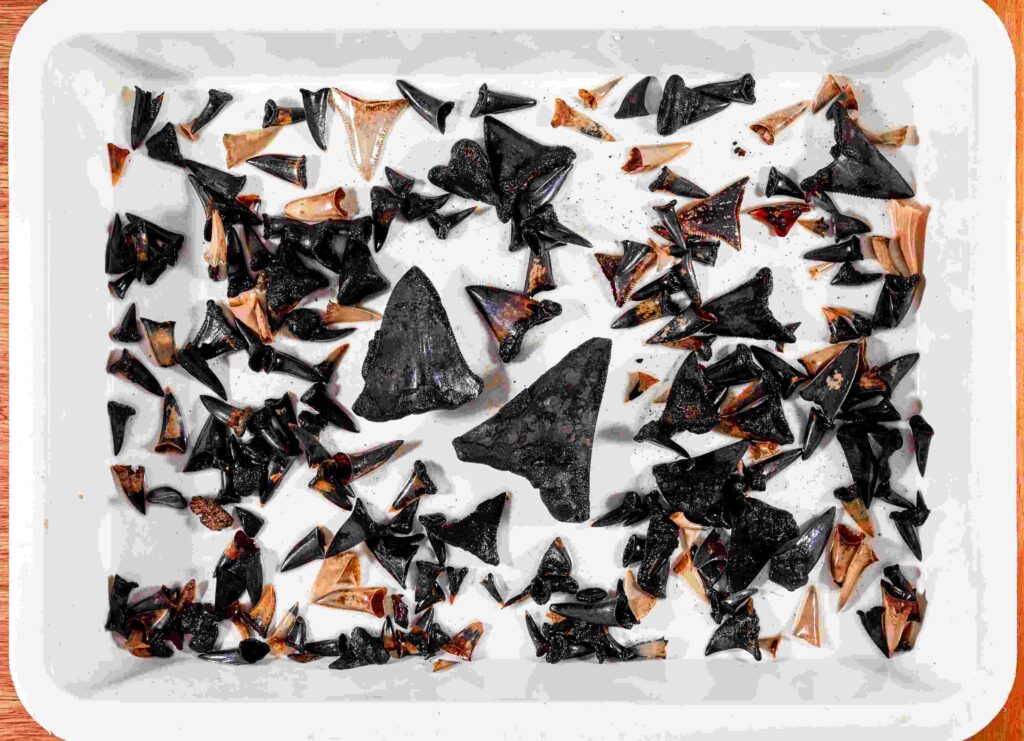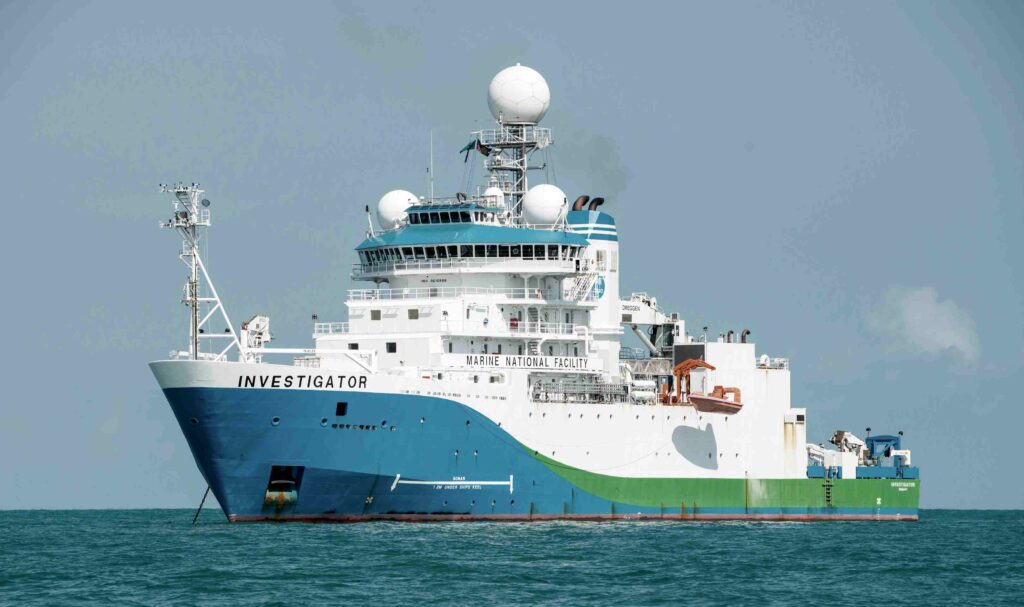A previously unknown horn shark with a taste for the depths, and a mysterious deep-sea “shark graveyard” spanning many millions of years have been revealed on the most recent voyages of the research vessel Investigator, operated by Australia’s CSIRO (Commonwealth Scientific & Industrial Research Organisation).
Also read: Meg 2: The truth about the extinct mega shark
The graveyard even contains the fossilised teeth of the ancient ancestor of the megalodon shark, say CSIRO scientists, who have been conducting biodiversity surveys for Parks Australia in two of the country’s newest Indian Ocean marine parks.
The first survey, on which the shark teeth came to light, was in the remote Cocos Keeling Islands, while the second, which is continuing in the Gascoyne Marine Park off Western Australia until mid-December, revealed the new-to-science shark.
“Early in the voyage we collected a striking small, stripey horn shark,” said CSIRO shark expert Dr Will White. “This species is unique to Australia, but it hasn’t yet been described and named. The specimen we collected will be incredibly important to science, because we’ll use it to describe the species.”
Horn sharks such as the Port Jackson shark are familiar to divers because they tend to be slow-moving and spend their days camouflaged among rocks and seaweed on shallow seabeds, emerging to feed by night. By contrast, the new species prefers to live more than 150m deep.
“It’s been estimated that around a third of the species collected on recent biodiversity survey voyages on rv Investigator may be new to science,” said Dr John Keesing, the chief scientist on the expedition. “These voyages give us the opportunity to learn more about marine ecosystems, as well as species range, abundance and behaviour.”
Megalodon’s ancestor

In Cocos Keeling, scientists led by the Museums Victoria Research Institute made their surprising discovery at a depth of 5.4km on the final trawl survey. They brought up more than 750 fossilised shark teeth – the only part of a shark that survives over time – that had accumulated at a single site across a vast span of time.

“The teeth look to come from modern sharks, such as mako and white sharks, but also from ancient sharks including the immediate ancestor of the giant megalodon shark,” said Dr Glenn Moore, the Western Australian Museum’s curator of fishes.
“This shark evolved into the megalodon, which was the largest of all sharks but died out about 3.5 million years ago.” The giant’s ancestor grew to more than 12m long, but the megalodon could measure up to 16m.
Dr Moore said it was astounding that such a large number of teeth had been collected from a relatively small area on the seafloor – and how they all came to be together there remains unclear.

“It shows there is more to learn about our 60 Australian Marine Parks, especially those in deep and difficult-to-access environments,” commented Parks Australia head of division Jason Mundy, adding that the information gathered through partnerships with research organisations and universities would prove helpful in managing remote parks.
Also on Divernet: South Of Sydney, The Real Meg – 16m Of Power, The Normal Sharks, Hip And Bits

